Stride and step science of dairy showmanship
Did you know that there is a science behind setting the feet on dairy cattle? Take a look into how we can use cattle stride patterns and gait to learn how to set feet for dairy cattle showmanship contests.
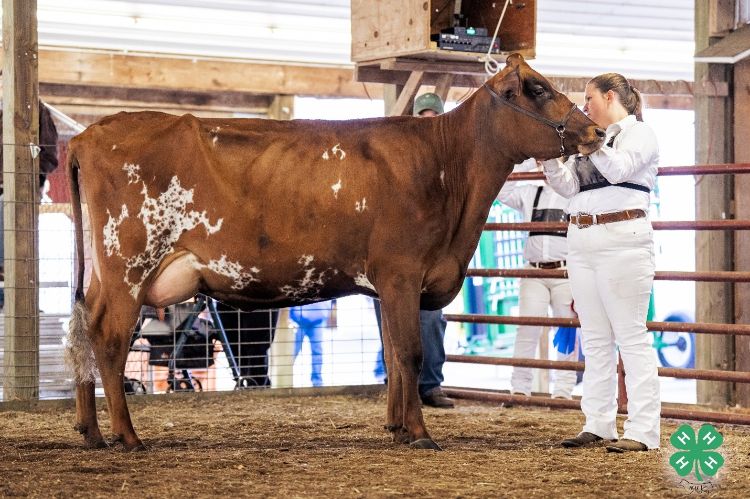
During dairy showmanship, exhibitors are always told to make sure that their cattle’s feet are set and to try and set those feet as quickly as possible. But how do exhibitors accomplish getting the feet set correctly and in a timely manner? Let’s take a look at bovine stride and gait patterns, as well as locomotive behaviors to help us set feet in the most effective and efficient way possible in the show ring.
Not all mammalian species have the same stride and gait patterns. For example, a cat’s stride pattern is identified as a pacing gait. A pacing gate is where both legs on one side of the body move forward simultaneously, followed by the legs on the opposite side. For a healthy and comfortable cat, their gait sequence is where the front leg moves together with a simultaneous push-off from the hind leg. See Figure 1 for a reference video on this gait pattern.
Figure 1. A cat walking at a normal pace. Video credit: Brenna Bruce.
When we take a look at a dairy animal’s stride and gait pattern, it can be characterized as a four-beat gait. This allows each leg to bear equal weight and hit the surface independently of one another. For a sound and comfortable dairy animal, their stride sequence is a non-simultaneous pattern of first the left hind, then the left front, followed by the right hind, and then the right front landing on the surface last.
Dairy cattle also have a gait cycle that is comprised of swing and stance phases. The swing phase is the period in the gait cycle when the foot is not in contact with the ground and is moving from the point of toe-off to just before the heel hits the ground. The stance phase is the part of the gait cycle where their foot is on the ground and bearing weight. We can use this known dairy cattle stride and gait pattern to set their feet in the quickest and most efficient way possible. See Figure 2 for a reference video on this gait pattern that is slower or a show ring pace.
Figure 2. Michigan 4-H member Andi D. walks her dairy heifer at a show ring pace. Video credit: Advantage Livestock.
See Figure 3 for a reference of a dairy cow walking at a normal pace.
Figure 3. Michigan 4-H member Sofia B. walks her cow at a normal pace. Video credit: Emily Berens.
When exhibiting dairy heifers, the hind leg that is on the judge’s side always needs to be farther back than the hind leg furthest from the judge. Exhibitors need to move the heifer’s hind legs based on where the judge is relative to their heifer. The following images show the correct way to set a dairy heifer from a judge’s perspective, as if the reader is the judge. See Figures 4 and 5 for a visual reference.
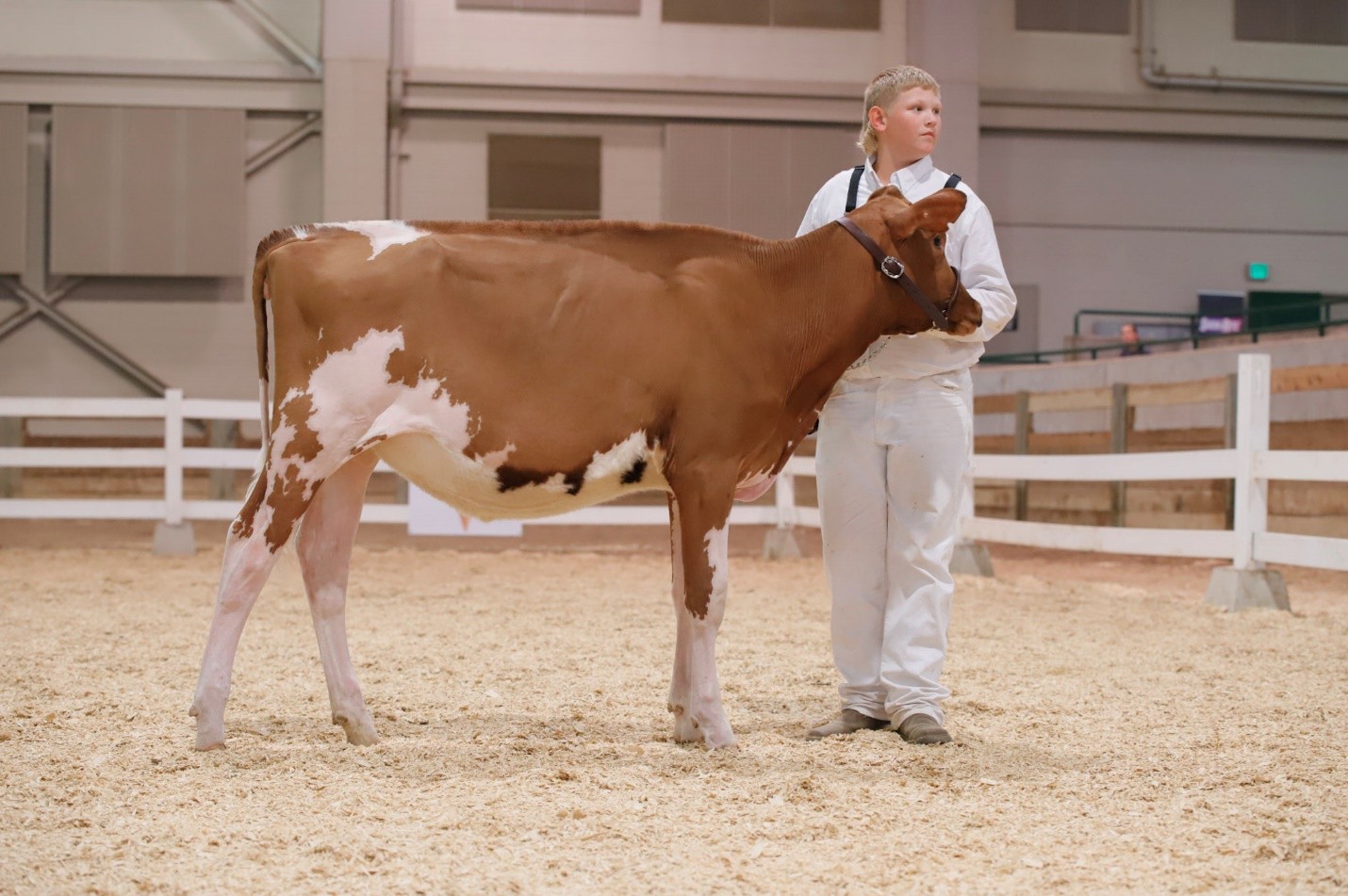
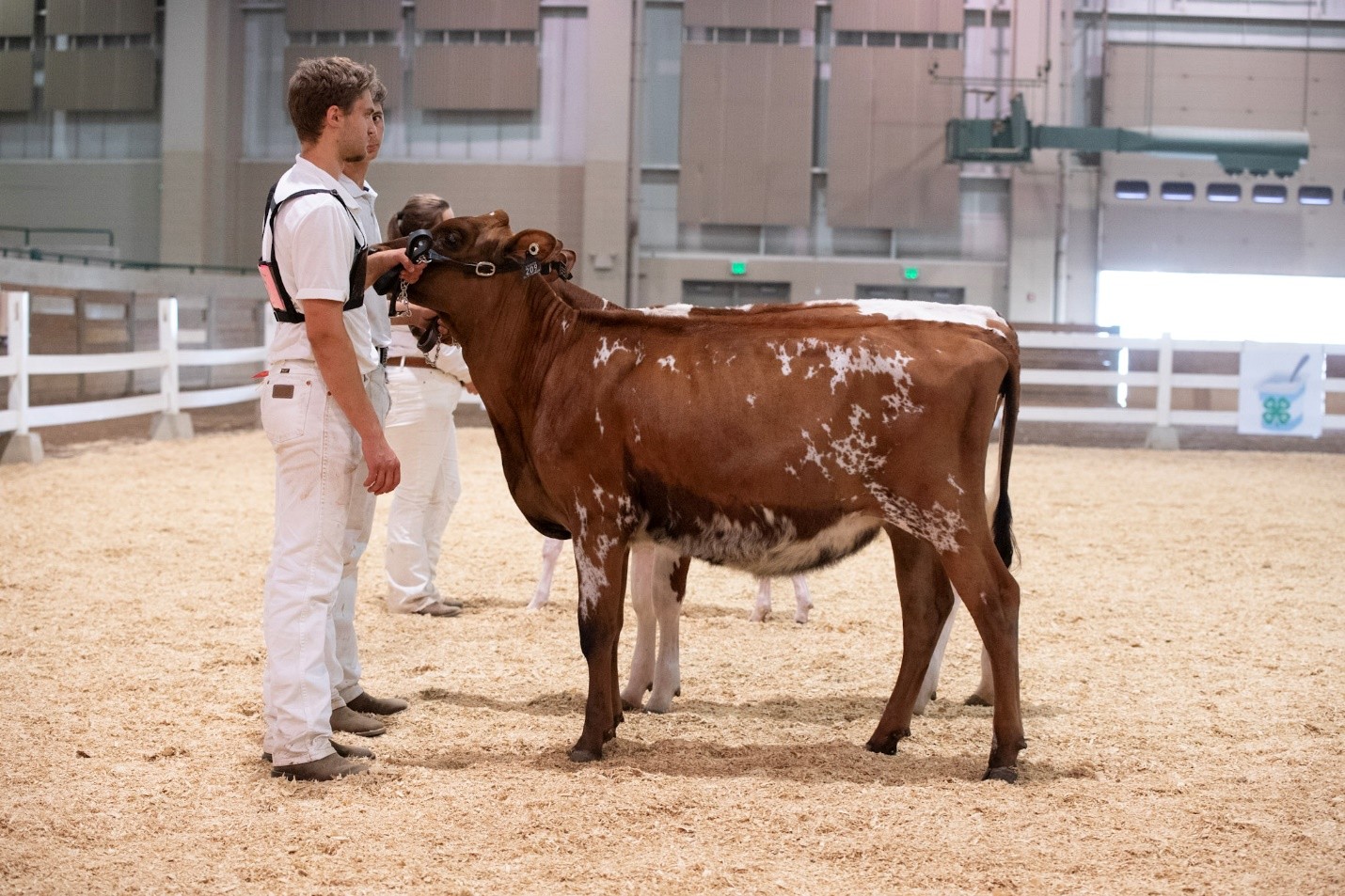
For dairy cows, the rear leg that is closest to the judge or that is on the same side as the judge, needs to be the leg that is farther forward. By setting the cow’s rear legs like this, the judge gets a clearer look at the cow’s rear udder. See Figures 6 and 7 for a visual reference. The following images show the correct way to set a dairy cow from a judge’s perspective, as if the reader is the judge.
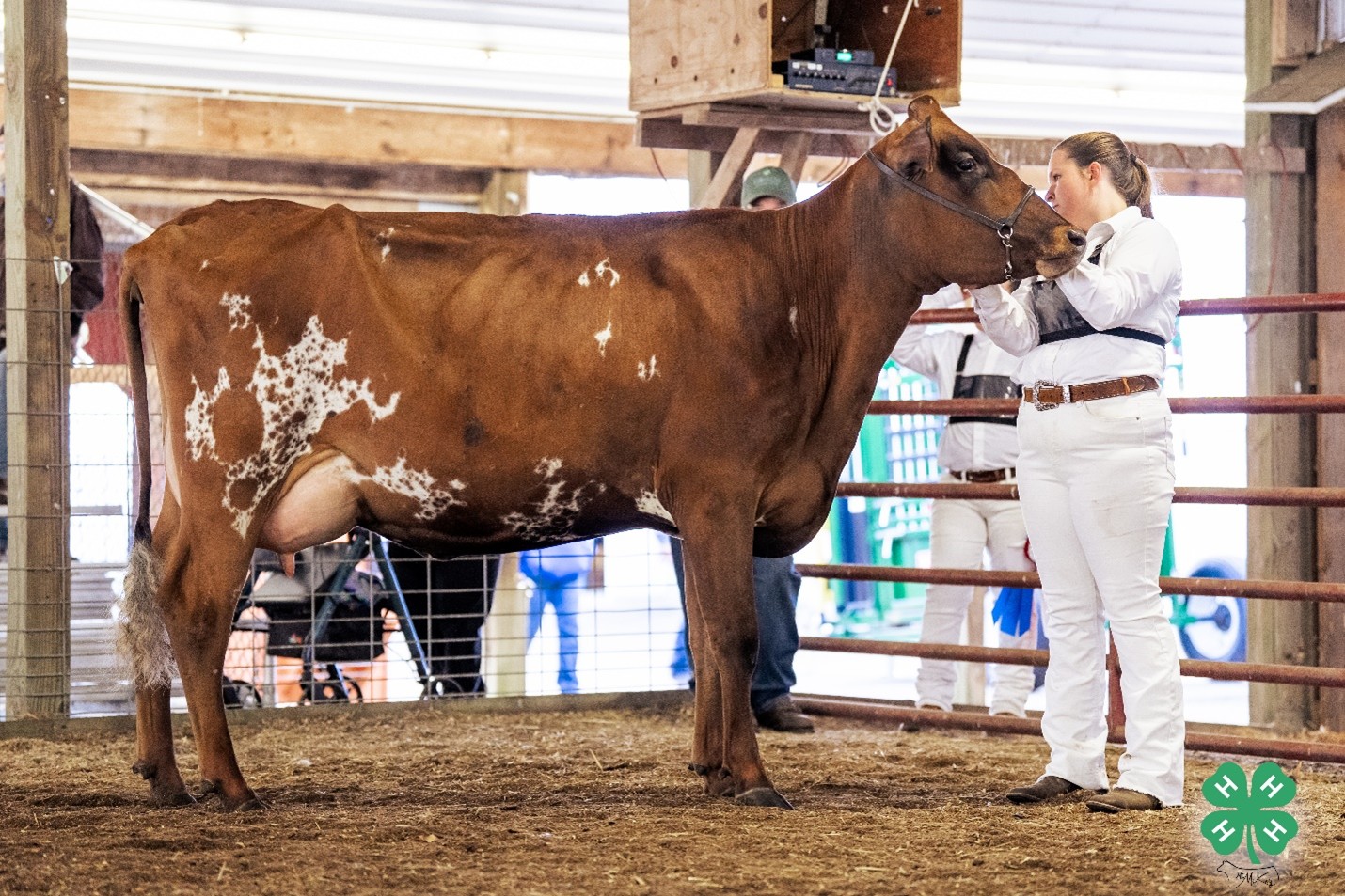
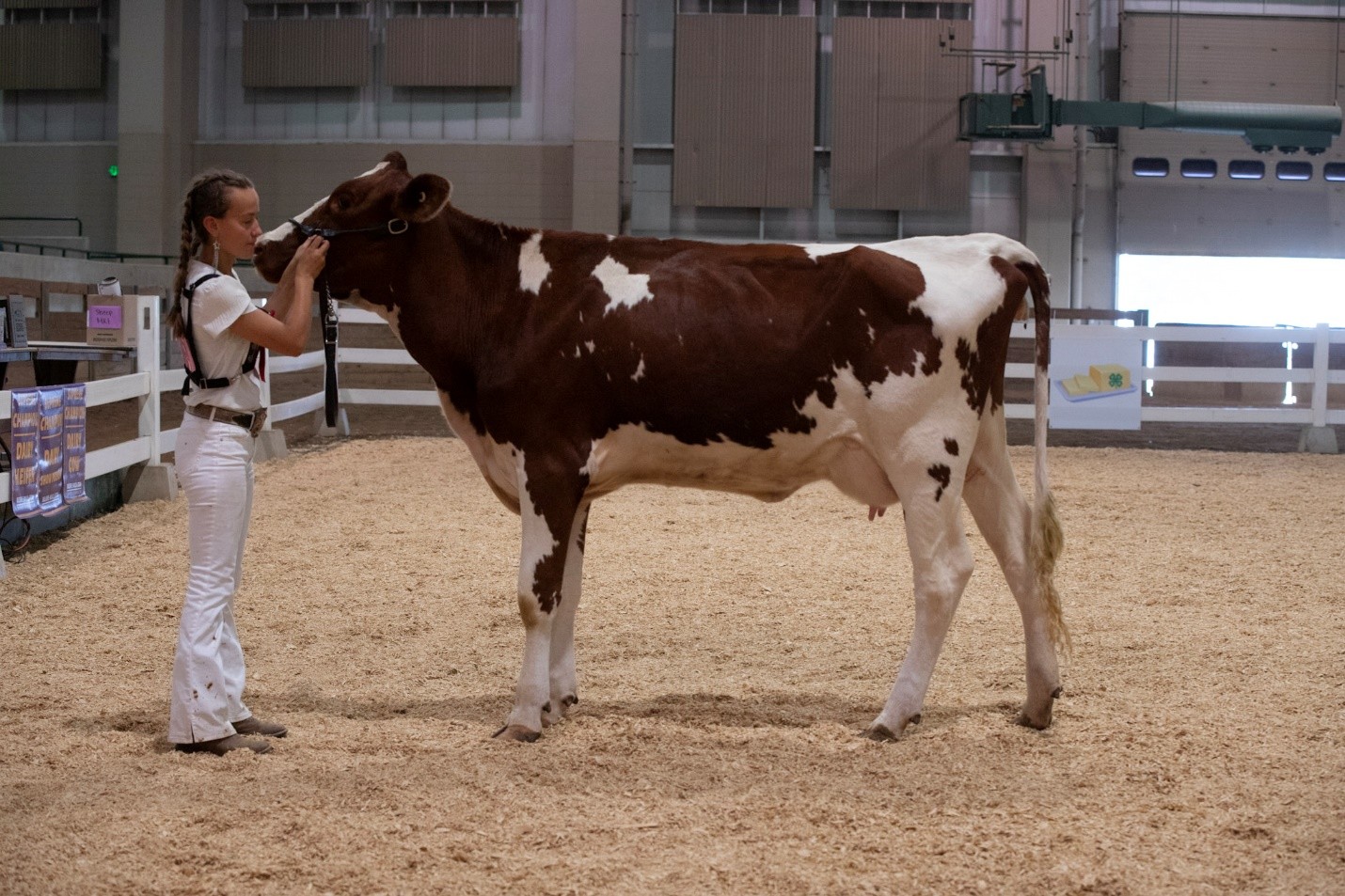
The front feet are always set squarely and even to one another. Refer to Figure 8 for a visual on this stance.
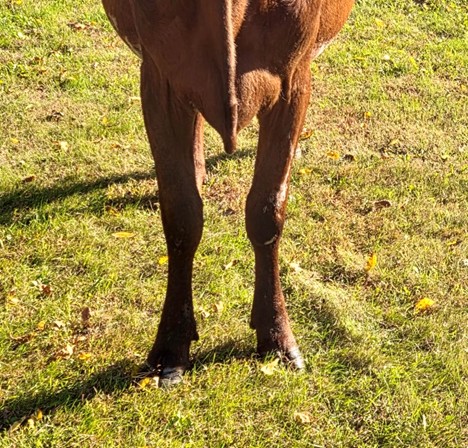
Exhibitors can use the halter and touching the shoulder to shift the animal’s body momentum and utilize the heifer or cow’s stride gait to set the legs. If the desired leg position has the heifer or cow’s left rear leg forward, a favorable method that can be used is for the exhibitor to stop the animal when the right front leg ascends to the ground, touches the ground and the hooves begin to apply pressure on the ground. If the right rear leg needs to be the rear leg that is the farthest forward, the exhibitor can stop the animal when the left front leg ascends to the ground, touches the ground and the hooves begin to apply pressure to the ground. To show this method, see Figures 9 and 10 for setting up a dairy heifer and see Figures 11 and 12 to see how to utilize their gait and stride sequence to set a dairy cow’s feet for a show.
Figure 9. From a judge’s perspective, Michigan 4-H member Alex M. shows how to walk his heifer into a set-up. Video credit: Kendra Van Order.
Figure 10. From a judge’s perspective, Michigan 4-H member Alex M. shows how to walk his heifer into a set-up. Video credit: Kendra Van Order.
Figure 11. From a judge’s perspective, Michigan 4-H member Sofia B. shows how to walk her cow into a set-up. Video credit: Emily Berens.
Figure 12. From a judge’s perspective, Michigan 4-H member Sofia B. shows how to walk her cow into a set-up. Video credit: Emily Berens.
By mastering these methods to set up dairy heifers and cows, exhibitors can provide a more efficient and effective way to show their animals. Mastering these methods takes a lot of time, consistency, patience and work at home before the show takes place. As the old saying goes, “Showmanship is won at home, and winners are merely recognized at shows.”
If you are interested in learning more about 4-H dairy projects, visit your local Michigan State University Extension website.



 Print
Print Email
Email





